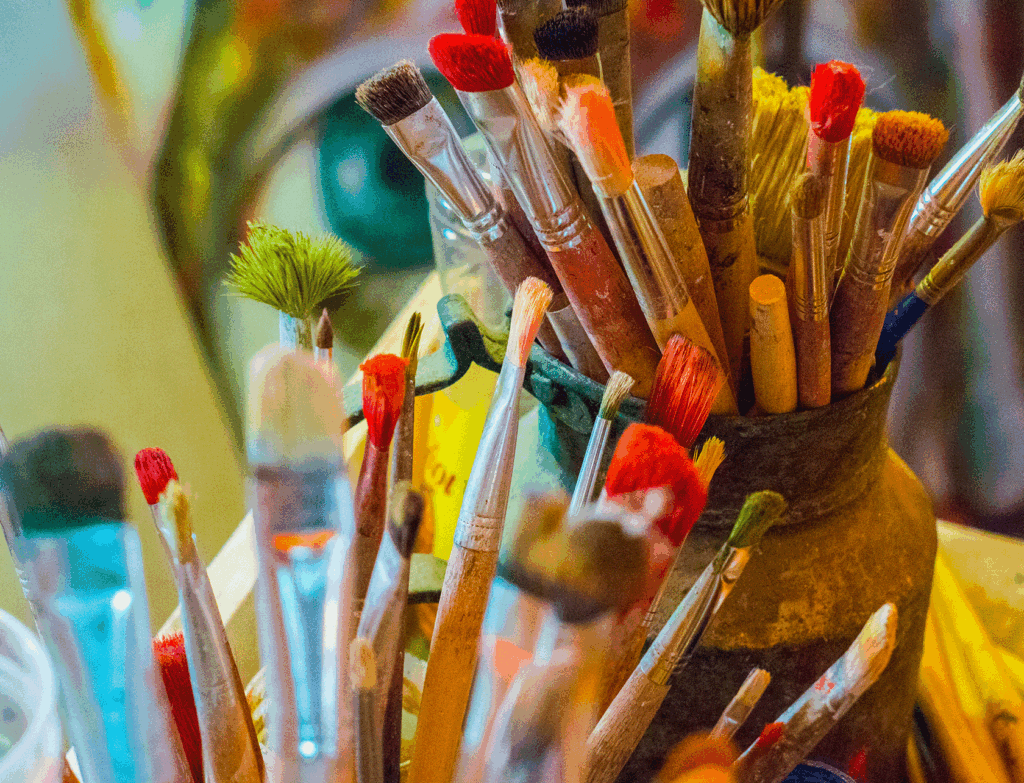
Navigating the art show landscape can be as complex and nuanced as the art pieces themselves. For artists looking to showcase their work, success is often predicated not just on talent, but on the ability to strategically select which exhibitions to participate in.
Understanding this critical aspect of the art business can be transformative for an artist’s career, paving the way for connections with ideal clients and ultimately achieving the recognition and sales they’ve been aiming for.
Audience Alignment
Art shows are not a one-size-fits-all scenario; each has its unique audience, reputation, and logistical challenges. A critical first step is audience alignment—knowing whether the people attending the show are likely to resonate with and purchase your work. It’s about ensuring that the crowd the event attracts is actually interested in buying art, not just attending for the ambiance or leisure activities.
Reputation
Another aspect is the event’s reputation and the perception it holds within the art community. This can significantly impact an artist’s decision to participate. An art show’s reputation among artists and collectors is a barometer for its quality and the likelihood of sales success. Shows renowned for high-quality art and serious buyers will benefit artists seeking to sell high-end work, while those with a more casual or craft market atmosphere might be better suited for artists with lower price points.
Art Style & Quality
The style and level of art presented are also determining factors. Shows vary widely, featuring everything from emerging artists to established professionals, and encompass a range of art forms, from traditional to contemporary. It is essential for artists to evaluate whether they will complement the show’s aesthetic or stand out in a way that is not beneficial.
Good Investment
Conducting a cost-benefit analysis is indispensable when considering which art shows to invest in. Factors like booth fees, travel expenses, and the time required to prepare and attend need to be weighed against the potential return on investment. The goal is to not just recoup costs but to make a significant profit that justifies the investment of time, money, and energy.
Logistics & Fit
Logistical considerations are equally important. The feasibility of traveling to the show, the cost and practicality of transporting artwork, and the potential need to ship sold pieces to buyers are all critical factors that can influence an artist’s decision to participate in a particular show.
Need Help?
For artists seeking guidance in this intricate process, mentoring programs like the Creative Thrive Artist Mentoring Program offer invaluable resources. With live coaching and comprehensive toolkits, such programs provide insights and strategies tailored to the contemporary art market. They can help artists navigate the complexities of art show selection, preparation, and participation.
In conclusion, selecting the right art shows is a strategic process that requires artists to be discerning and well-informed. By understanding their audience, assessing the art show’s reputation, and performing a thorough cost-benefit analysis, artists can make smart decisions that propel their careers forward. With the right guidance and resources, artists can transform their passion into a thriving business, making the most of each art show opportunity that comes their way.
Ever wondered why some artists seem to effortlessly capture the spotlight at art shows, while others struggle to make an impression? I’m peeling back the curtain on the strategic selection of art shows, revealing how crucial it is to align these opportunities with your unique artistry and business goals.
In our latest episode, we delve into the reasons why not every art show will be the right fit for you, and how understanding your target audience and the style of art presented can make or break your success. Join me as we discuss the importance of an event’s reputation, logistical considerations, and the art of saying ‘no’ to opportunities that don’t serve your artistic journey.
Strap in for an exciting exploration of art show strategies and how they can pave the way for a transformative year in your art career. Sharing anecdotes from my own experiences and insights from the Created to Thrive Artist Mentoring Program, I’ll show you how to conduct a cost-benefit analysis that ensures you’re investing in the right venues. With access to our live coaching and the comprehensive Artist Toolkit, you’ll be equipped with everything you need to navigate the art show landscape like a pro. Let’s embark on this artistic adventure together, and I’ll guide you towards making connections with your ideal clients and achieving the art show success you’ve been dreaming of.
Don’t forget, you can get your copy of The Artist Toolbox for Art Show Success when you become a part of the Created to Thrive Artist Mentoring Program at https://www.matttommeymentoring.com/artmentor and get started for just $14.
Fuel Your Creative Calling with Weekly Encouragement
Join thousands of Christian artists who are growing in faith, creativity, and purpose.
Subscribe to The Thriving Christian Artist Weekly and receive powerful, faith-filled content every week—designed to encourage your heart, spark your creativity, and equip you to walk boldly in your God-given calling as an artist.
? Click here. It’s free. It’s faith-filled. And it’s just for you.
Ever wondered why some artists seem to effortlessly capture the spotlight at art shows, while others struggle to make an impression? I’m peeling back the curtain on the strategic selection of art shows, revealing how crucial it is to align these opportunities with your unique artistry and business goals.
In our latest episode, we delve into the reasons why not every art show will be the right fit for you, and how understanding your target audience and the style of art presented can make or break your success. Join me as we discuss the importance of an event’s reputation, logistical considerations, and the art of saying ‘no’ to opportunities that don’t serve your artistic journey.
Strap in for an exciting exploration of art show strategies and how they can pave the way for a transformative year in your art career. Sharing anecdotes from my own experiences and insights from the Created to Thrive Artist Mentoring Program, I’ll show you how to conduct a cost-benefit analysis that ensures you’re investing in the right venues. With access to our live coaching and the comprehensive Artist Toolkit, you’ll be equipped with everything you need to navigate the art show landscape like a pro. Let’s embark on this artistic adventure together, and I’ll guide you towards making connections with your ideal clients and achieving the art show success you’ve been dreaming of.
Don’t forget, you can get your copy of The Artist Toolbox for Art Show Success when you become a part of the Created to Thrive Artist Mentoring Program at https://www.matttommeymentoring.com/artmentor and get started for just $14.
Fuel Your Creative Calling with Weekly Encouragement
Join thousands of Christian artists who are growing in faith, creativity, and purpose.
Subscribe to The Thriving Christian Artist Weekly and receive powerful, faith-filled content every week—designed to encourage your heart, spark your creativity, and equip you to walk boldly in your God-given calling as an artist.
? Click here. It’s free. It’s faith-filled. And it’s just for you.



Leave a Reply